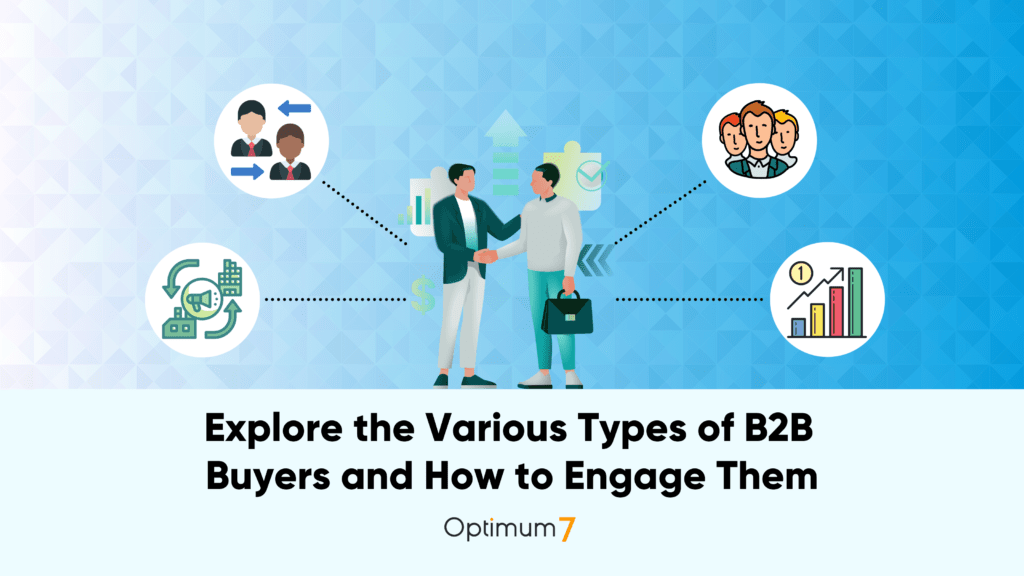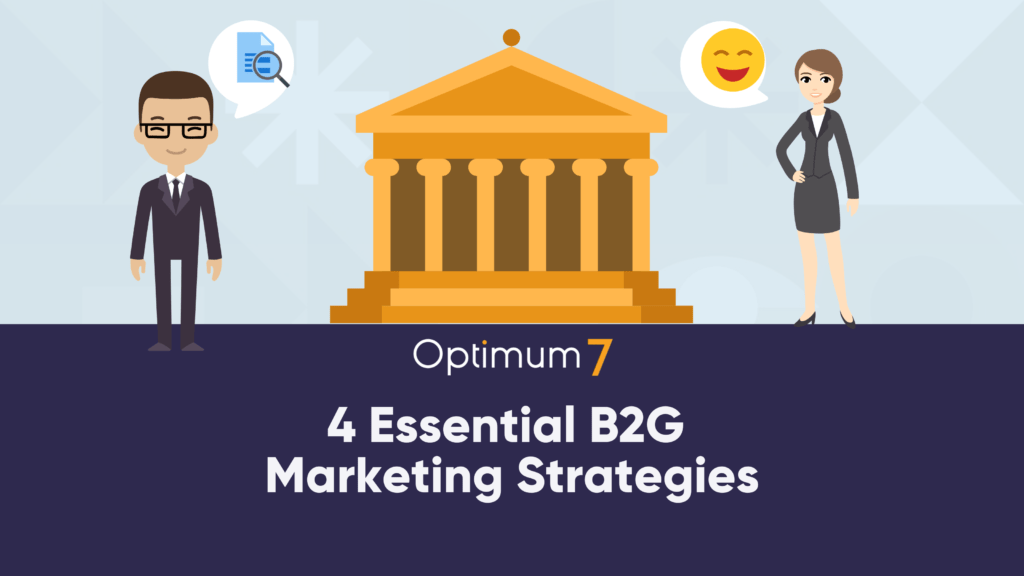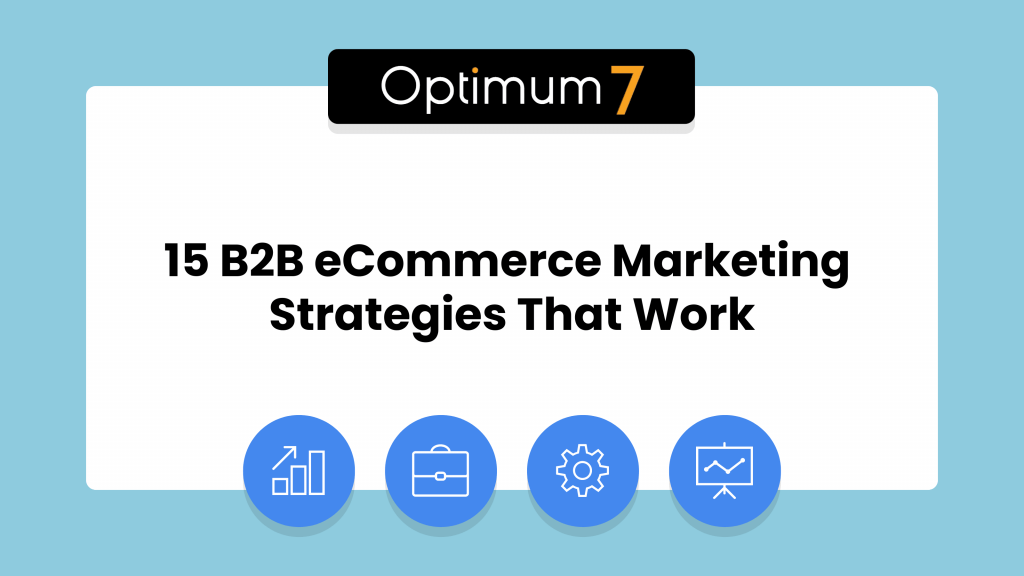Picture this: You’re selling something your business is really proud of, but it feels like nobody’s listening. You’ve tried everything, but it’s like there’s a wall between you and your customers. It’s super frustrating, right? You know you’ve got what they need, but how do you even start the conversation when it seems like they’re on a completely different page?
This whole thing about understanding your customers? It’s actually about figuring out where they’re coming from. Some might not even know they need what you’re offering, while others are almost ready to say yes but just need a little nudge. The thing is, there’s no magic phrase or single approach that works for everyone. It’s more about being genuine, knowing what to say, and when to say it.
At Optimum7, we get it. We’re all about making those connections simpler. No buzzwords, no complicated processes—just straight talk and strategies that actually make sense. We help you break down that wall and start real conversations. Because at the end of the day, it’s about people talking to people. Let’s keep it real and start making those connections.
Understanding the B2B Customer Journey
When people shop online, they enter what’s called the “messy middle” of their buying journey. It’s a stage filled with a lot of searching, comparing, and deciding—kind of like being in the middle of a maze, where every turn could be a new option or a piece of information. It’s not a straightforward path from wanting something to actually buying it. Instead, shoppers zigzag through a process of exploring all their options and then narrowing them down, sometimes repeating this cycle several times before making a decision.
During this process, our decisions are influenced by a mix of cognitive biases. For example, quick and easy descriptions make products more appealing, immediate availability boosts their attractiveness, and good reviews from other shoppers can sway our choices. Also, items that seem scarce or recommended by experts might seem more desirable, and getting something extra for free always feels like a win.
Understanding the “messy middle” means recognizing that this part of the shopping experience is normal and necessary for customers. As marketers or businesses, our role is to guide customers through this complexity by being visible when they’re exploring and compelling when they’re evaluating. It’s about making sure they have the information and confidence needed to make their purchase decisions with us.
Strategies to Boost Engagement at Each Stage
In the “messy middle,” engagement isn’t just about being seen; it’s about connecting meaningfully with customers at every level of awareness—from those just realizing they have a need, to those ready to make a purchase. By aligning our strategies with these levels of awareness, we can navigate the complexities of the “messy middle” more effectively.
1. Unaware to Problem-Aware: Sparking Interest
At the very start, customers might not even know they need your product. Here, the aim is to spark interest and move them from being unaware to recognizing a problem or need. Engage them with content that highlights common challenges or pain points your product solves, without making a hard sell. Educational content, industry insights, and trend analyses can play a big role in transitioning customers to the next level of awareness.
2. Problem-Aware to Solution-Aware: Providing Answers
Once customers recognize they have a problem, they start looking for solutions. This is where detailed product information, how-to guides, and case studies can showcase your product as a solution. It’s about providing answers and showing your product in action, addressing potential questions and concerns that arise as they evaluate their options.
3. Solution-Aware to Product-Aware: Building Desire
At this stage, customers know about the solutions available but need to understand why yours is the best choice. Comparison content, demos, and testimonials are key to elevating their awareness from just knowing about the solution to wanting your specific product. Highlighting unique features, benefits, and value propositions helps build desire and nudges them closer to making a decision.
4. Product-Aware to Most Aware: Closing the Gap
For customers who are already considering your product, it’s about closing the deal. Exclusive offers, free trials, and limited-time promotions can tip the scales. Engagement here means reassuring them of the value and support they’ll receive, making it easy for them to choose you.
Strategies to Enhance Engagement in the “Messy Middle”
Personalize the Journey: Tailor communications and recommendations based on the customer’s current level of awareness and previous interactions. Personalization can significantly enhance engagement by making the experience more relevant and appealing.
Utilize Multi-Channel Engagement: Be present across multiple channels—email, social media, search engines, and more—to meet customers where they are. Each channel offers unique opportunities to engage with content and messages suited to different levels of awareness.
Encourage Social Proof: Leverage reviews, user-generated content, and peer recommendations. Social proof is powerful at every awareness level but particularly when customers are moving from being solution-aware to product-aware.
Offer Value at Every Step: Whether it’s through informative content, helpful tools, or engaging experiences, ensure that every interaction adds value. This approach builds trust and keeps customers moving through their journey.
By focusing on these tailored strategies, businesses can effectively engage with customers at every stage of their journey, even within the complexities of the “messy middle.” This nuanced approach not only aids in navigating the purchase process but also in building a deeper connection with the audience, ultimately leading to increased customer lifetime value.
The Role of Digital Marketing and Development Services
Digital marketing and development services play a pivotal role in engaging customers throughout their journey, especially in navigating the complexities of the “messy middle” and ensuring a seamless post-purchase experience. Here’s how these services contribute to increasing customer engagement and lifetime value:
1. Personalization and Targeting
Digital marketing services excel at personalizing customer experiences. By leveraging data analytics and AI, businesses can deliver targeted content and offers that resonate with customers at different awareness levels. This personalization fosters a sense of understanding and connection, encouraging customers to move forward in their journey.
2. Content Marketing
Content is king in guiding customers through the “messy middle.” Educational blogs, how-to videos, and insightful webinars help demystify the purchasing process, providing value and building trust. Development services ensure that this content is easily accessible and engaging across all digital platforms, enhancing the overall user experience.
3. SEO and SEM
Search Engine Optimization (SEO) and Search Engine Marketing (SEM) are crucial for visibility in the early stages of the customer journey. They help capture the attention of those in the exploration phase, directing them to solutions that match their needs. A well-optimized website and strategic ad campaigns make it easier for potential customers to find and engage with your brand.
4. Social Media Engagement
Digital marketing leverages social media platforms to not only reach customers at various levels of awareness but also to engage in meaningful conversations. These platforms provide a space for sharing valuable content, responding to queries, and showcasing customer testimonials, all of which enhance engagement and trust.
5. Custom Development Solutions
Development services tailor digital experiences to meet customer needs. Custom functionalities, such as chatbots for instant support or personalized recommendation engines, significantly improve the user experience. For businesses, this means keeping potential customers engaged and moving smoothly through the “messy middle” toward purchase.
Best Practices for B2B Companies
At Optimum7, we’ve been in the trenches with lots of B2B companies, helping them get their message just right. We’ve seen it all, from the super technical to the ultra-niche. What we’ve learned is how to make any message clear, engaging, and, most importantly, real. No fluff, just straight-up good communication that hits the mark. Our secret sauce? Listening closely to what our clients need and matching that with what their customers want to hear. It’s about finding that sweet spot where business talk meets human talk, and that’s where we shine.
Adopting a Customer-Centric Approach
For B2B companies, the pivot toward a customer-centric approach is not just beneficial—it’s essential. This means going beyond just understanding customer needs and actively anticipating them, ensuring every touchpoint in the customer journey is thoughtfully designed to provide value. It involves:
- Listening actively to customer feedback across all channels.
- Personalizing interactions based on customer data to make every communication relevant and engaging.
- Empowering customers with tools and resources that help them solve their problems and achieve their goals.
- Fostering relationships that go beyond transactions, aiming to build long-term partnerships based on trust and mutual success.
The Importance of Data-Driven Decision-Making
Data is the compass that guides B2B companies through the complex landscape of customer engagement. Utilizing data-driven insights allows for:
- Identifying patterns in customer behavior that can predict future needs or highlight areas for improvement.
- Tailoring marketing efforts to target customers more effectively, optimizing budget spend and increasing ROI.
- Enhancing product development by aligning features and functionalities with customer requirements and market demand.
- Measuring success through key performance indicators that align with business goals, allowing for agile adjustments to strategies as needed.
Data isn’t just numbers; it’s the voice of your customer base, echoing their preferences, behaviors, and expectations. Listening to this voice through a structured, analytical approach is key to staying ahead in the B2B sector.
Conclusion
Enhancing the B2B customer journey isn’t just about smoothing out the path to purchase; it’s about creating a roadmap for lasting engagement that drives customer lifetime value. In today’s digital-first landscape, this journey is dotted with opportunities to connect, understand, and deliver value at every stage—from the first flicker of awareness through the “messy middle” and beyond the initial sale.
At Optimum7, we pride ourselves on our expertise in navigating this journey. With a deep understanding of the nuances of B2B engagement and a robust toolkit of digital marketing and development solutions, we’re more than just service providers; we’re strategic partners ready to help businesses unlock their full potential. Our approach is grounded in simplicity, clarity, and a relentless focus on delivering real, measurable results.
The journey to enhance the B2B customer experience is complex, but you don’t have to navigate it alone. Optimum7 is here to guide you, leveraging our expertise to craft bespoke strategies that not only meet but exceed your customers’ expectations, driving engagement, loyalty, and ultimately, value across the entirety of the customer lifecycle.





